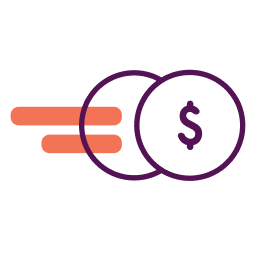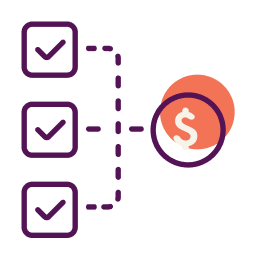What is Merchant Cash Advance? (All You Need To Know)
Gerri Detweiler • December 8, 2022
What is a Merchant Cash Advance (MCA)?
A merchant cash advance is not technically a business loan but instead offers an advance against future sales, based on past debit and credit card sales.
The funding provider gets paid back by automatically taking a portion of future credit card sales, usually each business day. Qualified business owners can usually get approved in a day or two, with very little paperwork.
Merchant cash advances provide small businesses with an alternative to other types of small business loans that may be harder to get, such business lines of credit or traditional bank loans. Business owners receive funds as a lump sum upfront from a merchant cash advance provider and repay the advance from future sales. An MCA can be a funding option for businesses that have high credit card sales volume, need funding quickly, and may not qualify for other small business loans.
But you’ll likely pay for this convenience with costs that are higher than traditional small business loans. Here we’ll explain what you need to know if you’re considering this small business financing option
Note:A merchant cash advance is only available to businesses that accept debit or credit cards for payment. If your business doesn’t take debit or credit cards, an MCA will not be available to you.

Let’s Find the Right Loan for Your Business
Nav serves nearly every kind of business, and our experts will match you to the right fit for your business needs.
Where to Get a Merchant Cash Advance
A number of companies offering merchant cash advances. Here’s are a couple of popular options:
Credibly
Credibly offers $5,000 – $400,000 to small businesses with at least six months in operation, $15,000 in monthly revenue and a minimum 500 credit score (with a soft credit pull). If approved, funding is fast: As quickly as 1 business day Repayment terms: Daily debits from your bank account for 3 to 18 months.
Advertiser Disclosure
Business Cash Advance by Credibly
Credibly is very comparable to other alternative online lenders. Because of their pre-qualification, you can see if you qualify and then research if it’s the best option for you.
FUNDING AMOUNT
$5,000 – $400,000
COST
Factor rates as low as 1.11
REPAYMENT TERMS
Daily debits from your bank account for 3 to 18 months
FUNDING SPEED
As quickly as 1 business day
More Details
Rapid Finance
Rapid Finance offers merchant cash advances of up to $5,000-$600,000 in 1-3 days. Payments are variable, depending on future receivables, over 4 – 12 months.
Advertiser Disclosure
Business Cash Advance by Rapid Finance
A viable option for businesses looking for growth capital up to $600,000. Costs will vary based on your risk profile.
FUNDING AMOUNT
$5,000-$600,000
COST
1.20 Average Factor Rate
REPAYMENT TERMS
4 – 12 months
FUNDING SPEED
1-3 days
More Details
Fundbox
Fundbox doesn’t offer merchant cash advances, but their lines of credit may be a great alternative for borrowers with less than perfect credit. Merchant cash advances traditionally have lower approval thresholds, and Fundbox’s line of credit falls right in line. Borrowers can qualify with a personal credit score of just 600.
Line of Credit by Fundbox
A great way to grow your business with an easy and transparent application and approval process.
FUNDING AMOUNT
$1,000 – $150,000
COST
As low as 4.99%*
REPAYMENT TERMS
12 or 24 weeks
FUNDING SPEED
If approved, funds arrive as soon as the next business day.
More Details
See all options

How Does a Merchant Cash Advance Work?
When a small business most needs funding, it can seem hard to get it. Traditional lenders like banks often have long approval processes.
This is one of the advantages of a merchant cash advance. A merchant cash advance reviews the past debit card and credit card sales of the business and uses that to provide an advance against future sales. Funding is often very fast.
If approved, payments will often be taken out of your merchant account or bank account via a daily (or sometimes weekly) direct debit. Some MCAs will base the payment on how much your business receives in sales. When sales are lower, you pay less. This can be helpful for cash flow.
Make sure you consider the consistency of your cash flow and whether or not you’ll have the appropriate cash in your merchant account each day to support the periodic payment.

Know where your business financial health stands today
See your top loan and business credit card options, based on your business data and your business needs.
What You Need to Know About Merchant Cash Advances
Merchant Cash Advance Pros
Pros
- Fast access to cash
- Flexible repayment terms
- Excellent credit not required
- Wide range of use of funds
- No collateral required
The hallmark benefit of merchant cash advances is fast access to cash. Many issuers can get you funding in a lump sum within 48-72 hours. Credit may not be a hurdle as it can be with other loans. They also don’t require high personal or business credit scores, instead putting more weight on credit card and non-invoice sales numbers. Issuers also place little to no stipulations on how the cash is to be used, meaning you have more freedom to use the advance on what you need without any extra hands steering the ship. You won’t need to put up any collateral (other than your future credit card receipts), and providers may offer somewhat flexible repayment terms..
Merchant Cash Advance Cons
Cons
- Expensive compared to many other options
- Minimum daily payments may hurt cash flow
- Doesn’t help build business credit
- May lock-in merchant processor
- Must accept debit and credit cards
Merchant cash advances can be very expensive. A low factor rate can be comparable to a 35% APR, and if you get a high factor rate, you can pay up to the equivalent of 350% APR (or more). And, because they are not loans and don’t report your payment history to the business credit bureaus, they won’t help you build business credit. With daily payments standard, merchant cash advances can quickly become a cash flow burden if not managed properly.
Merchant Cash Advance Terms and Features
Getting a merchant cash advance is quick and easy, and filling out the application can take very little time. In fact, you may be able to get approval the same day you apply and receive your funding a day or two after that.
With quick approval turnarounds, you can access cash much quicker than with other means of financing, including short-term loans or long-term loans. Plus, merchant cash advances don’t usually require good business credit or collateral, unlike traditional business loans. The MCA is based on your business’s cash flow and not your business history or credit score.
Each merchant cash advance will have the following features:
- Advance amount. The principal amount advanced can range from $2,500 to $1 million, but most MCAs will fall between $5,000 and $500,000.
- Factor rate. This describes the rate charged, and can be as low as 1.09, and can go as high as 1.5 or higher principal amounts.
- Payment frequency. MCAs don’t offer monthly payments. Instead payments are made on a daily or weekly basis, and are made automatically, often as a percentage of sales.
- Repayment period. Because payments are often based on sales, there is unlikely to be a set repayment period. However, this is short-term financing that must be paid back in three months to two years.
Keep in mind that while MCAs are quick and easy to get, the high cost may not make them the right decision for your business. You can pay up to 50% of the amount of your principal, and the payment amount won’t change over time, as they would with a traditional loan. In addition, you may be penalized for paying the MCA back early with a higher APR.
When to Use Merchant Cash Advances
Merchant cash advances are extremely flexible, especially in the amount of money you can get and how you pay it back. Because a qualifying business owner can usually access an MCA quickly it can be an option for a business owner who needs fast cash to cover some of the following uses cases:
- Temporary cash flow help. If you’ve had an unexpected downturn in your cash flow for any reason and you need help covering payroll, utility bills, or your lease, a MCA may be a quick and easy solution.
- Purchasing inventory at a deep discount. Many small businesses that deal with inventory, such as retail, restaurant or e-commerce businesses, may want to purchase supplies when they can get significant discounts. This can be particularly helpful when supply chains are strained.
- Unplanned expenses. If an important piece of equipment has broken or another emergency arises, you can use a MCA to cover the cost quickly.
- Working capital. Getting an MCA may be helpful for short-term working capital needs.
If you have the cash flow and credit card receipts to support the typical daily debit from your merchant account, an MCA may allow you to get in and out of financing quickly. However it should be considered a short-term financing solution due to the cost.
How to Apply for a Merchant Cash Advance
Qualifying may be the easiest part of getting a merchant cash advance. Unlike traditional small business loans, applicants don’t need to have 2-3 years in business to qualify. The amount and number of your credit card payments are more important than a business’ credit profile. Eligibility is often more flexible than traditional lenders, and solid sales numbers can help a business with poor credit qualify for a merchant cash advance.
Most providers offer online applications, making the already quick process even more convenient for business owners.
You will often need to provide:
- 3-6 months business bank account statements
- Merchant account or credit card processing account statements
- Basic information about your business
The cash advance provider may check personal or business credit, but again, information from your bank statements and/or merchant account will carry the most weight. Keep in mind that good credit may help you qualify for better terms.

Merchant Cash Advance Repayments
Because an MCA is not a loan and is really an advance based upon your credit card volume, the way you repay the advance and the fees you pay might feel unfamiliar with what you are accustomed to. Most MCA providers debit money from your daily credit card transactions to repay the MCA (though some providers allow for weekly debits instead). If your MCA requires daily debits, there is generally no grace period. You should expect to start making daily payments the day following disbursement of funds.
Additionally, there may be a new term or two you should become familiar with. In addition to terms like periodic payment, daily debit, and payback period, there is something called a holdback. Holdback refers to the percentage of your daily credit card transactions that are debited from your account every day. The holdback percentage is usually between 10% and 20% of your daily receipts and remains fixed until the advance is paid in full.
Holdback, interest rate, and factor rate are not the same things.
Merchant Cash Advance Rates And Fees
Business owners often confuse the holdback with the rate you will pay for the advance. If you want to understand the cost of an MCA, the factor rate is key to evaluating it. Most MCAs, when they express the cost, do not use an Annual Percentage Rate (APR) but instead use a factor rate. Think of it as more of a calculation rather than an interest rate percentage.
For example, if you are quoted a factor rate of 1.5, that means that for every dollar you get advanced, you will pay back $1.50 (or $.50 per dollar). In other words, if you get an advance amount of $10,000 at a factor rate of 1.5, you will pay $5,000 back to the MCA provider as your cost of the capital. $10,000 x 1.5 =$15,000.
In this example, if the holdback percentage was 15% and $5,000 was deposited into your merchant account for today, the holdback would be $750. 15% of $5,000 is $750. If, instead, you received $8,000 in your account tomorrow, the holdback amount would be $1,200 since 15% of $8,000 is $1,200.
Your holdback amount will vary depending on the credit card receipts in your merchant account. In other words, when you have a big day with a lot of credit card receipts, your periodic payment (based on the holdback) will be larger than slower days with fewer credit card sales.
Because your periodic payments will likely be daily, you’ll want to confirm whether or not those daily payments will be debited only on business days—or will they also include weekends? And, as mentioned earlier, know whether you’ll have weekly or daily debits so you can control cash flow effectively. Daily debits can be frustrating for a business owner not expecting the first payment to be due so quickly.

Top Financial Options
Your small business financing search stops here. Compare your top small business financing options, from over 160 financial products – with Nav.
How a Merchant Cash Advance Can Benefit Your Business
Although the costs associated with a merchant cash advance (MCA) are typically higher than a traditional loan at the bank, they offer some key benefits:
- The application process is generally quick and easy
- You’ll get an answer fast and have access to capital quickly if approved
- You don’t need exceptional credit to qualify
An MCA can be a good option if your business has an opportunity to increase ROI on a project but needs to respond quickly with additional capital.
A merchant cash advance can be a tool to access capital quickly, but it can also put a business in cash flow jeopardy if you’re not careful. Although there are a number of factors that make an MCA attractive to a business with a weak credit profile, some businesses use this type of financing to augment a short-term cash flow crunch. A good use for a merchant cash advance is to fund a short-term opportunity to generate additional ROI on a project—like the purchase of quick-turnaround inventory.
The businesses most successful at leveraging an MCA are those that use funds to augment some kind of ROI-generating activity, are very mindful of the costs, and understand those costs in relation to the potential ROI gain. If that describes you, a merchant cash advance could be a good option for your business.
However, because this option is more expensive than some other options, it can become very expensive if you’re looking for money to bail you out of a financial bind. You don’t want to get in the habit of relying on merchant cash advances since its higher cost can make it very difficult to manage future cash flow.

The Latest Changes in the Merchant Cash Advances Market
The MCA industry is poised for growth. It is expected to grow globally to $26.3 billion annually by the year 2029, according to the Merchant Cash Advance Market report by Adroit Market Research.
Growth is fueled by benefits such as fast funding and online applications, as well as working capital challenges faced by small businesses. Improvements in technology allow providers to quickly review credit applications and provide funding in hours or days.
Alternatives to Merchant Cash Advances
A merchant cash advance is simply one of several business funding options available to small business borrowers—even with a less-than-perfect credit profile. Here are some of those other options:
Online Small Business Loans
Many online lenders offer both short- and long-term business loans that can meet the needs of a small business. Each online business loan program will have different eligibility requirements. The goal is to find a loans that meets your business needs, and is also a match with your profile.
Business Cash Advance
Different from a merchant cash advance in that it is based on your cash flow, the business cash advance often has a fixed payment (still potentially daily or weekly depending on the lender), and may offer somewhat lower costs than a typical merchant cash advance.
Factoring
Factoring is not a small business loan either. Instead the business sells outstanding invoices at a discount. It provides cash now rather than waiting for your customers to pay their invoices, and it is a viable way to access short-term capital (provided your customers pay by invoice).
Accounts Receivable Financing
Unlike factoring, AR financing is a loan secured by the value of your receivables. The lender will typically report your loan payment history to the appropriate business credit bureaus, meaning your good credit practices will help improve your business credit profile in addition to providing you with access to borrowed capital.
Business Credit Cards
Most business credit cards offer a line of credit you can use for short-term financing. Minimum payments are often low, but interest rates can be high, though not as high as some MCAs. A few business credit cards feature 0% intro APRs, which can make them an affordable option if you need to borrow funds for a short period of time.
Nav’s Verdict: Merchant Cash Advance
If you don’t qualify for other financing because of less-than-perfect credit, or other qualifying factors, merchant cash advances can help. But you should be cautious and have a plan for how this funding will increase revenues more than the cost. This type of financing should be used for short-term needs when other financing isn’t available.
Frequently Asked Questions About Merchant Cash Advances



